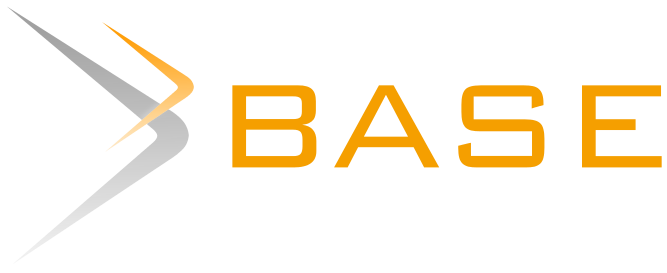PT. Kalbe Farma, Tbk's asset profitability and the impact of current, quick, and cash ratios
Keywords:
current ratio, quick ratio, cash ratioAbstract
This research was conducted to examine the effect of the Current Ratio, Quick Ratio, and Cash ratio on the profitability of assets at PT. Kalbe Parma, Tbk on the Indonesia Stock Exchange 2016-2020 The analysis technique used is multiple linear regression and hypothesis testing using t-statistics to test the partial regression coefficients and f-statistics to test the significance of the effect together with a significance level of 5%. The results of this study indicate that the Current Ratio, Quick Ratio, and Cash ratio simultaneously significantly affect asset profitability. Based on partial testing, the Current Ratio has a positive and significant effect on asset profitability, the current ratio has a negative and significant impact on asset profitability, and the quick ratio does not significantly affect the profitability of assets. The advice for further research is that it is expected to add other independent variables that can affect asset profitability. It is recommended that the BE level of asset profitability in other industrial sectors listed on the Indonesia Stock Exchange (IDX) be examined
Downloads
References
Adiputra, I. G., & Hermawan, A. (2020). The effect of corporate social responsibility, firm size, dividend policy and liquidity on firm value: Evidence from manufacturing companies in Indonesia. International Journal of Innovation, Creativity and Change, 11(6), 325–338.
Al-Busaidi, K. A., & Al-Muharrami, S. (2021). Beyond profitability: ICT investments and financial institutions performance measures in developing economies. Journal of Enterprise Information Management, 34(3), 900–921.
Alfiani, D., & Nurmala, P. (2020). Pengaruh ukuran perusahaan, profitabilitas, solvabilitas, dan reputasi kantor akuntan publik terhadap audit delay. Journal of Technopreneurship on Economics and Business Review, 1(2), 79–99.
Ausat, A. M. A., Widayani, A., Rachmawati, I., Latifah, N., & Suherlan, S. (2022). The effect of intellectual capital and innovative work behavior on business performance. Journal of Economics, Business, & Accountancy Ventura, 24(3), 363–378.
Bordeianu, G.-D., & Radu, F. (2020). Basic Types of Financial Ratios Used to Measure a Company’s Performance. Economy Transdisciplinarity Cognition, 23(2).
De Luca, P. (2022). Economic and Financial Dynamic Analysis: Invested Capital and Capital Structure. In Corporate Finance: Fundamentals of Value and Price (pp. 115–141). Springer.
Diana, H. I., & Maria, M. M. (2020). The importance Of profitability indicators In assessing The financial performance Of economic entities. The Annals of the University of Oradea, 29(2020), 219.
Dirman, A. (2020). Financial distress: the impacts of profitability, liquidity, leverage, firm size, and free cash flow. International Journal of Business, Economics and Law, 22(1), 17–25.
Fegatelli, P. (2022). A central bank digital currency in a heterogeneous monetary union: Managing the effects on the bank lending channel. Journal of Macroeconomics, 71, 103392.
Guzel, A. (2021). Risk, Asset and Liability Management in Banking: Conceptual and Contemporary Approach. In Financial Ecosystem and Strategy in the Digital Era: Global Approaches and New Opportunities (pp. 121–177). Springer.
Kanga, D., Murinde, V., & Soumaré, I. (2020). Capital, risk and profitability of WAEMU banks: Does bank ownership matter? Journal of Banking & Finance, 114, 105814.
Kuong, J. C.-F. (2021). Self-fulfilling fire sales: Fragility of collateralized short-term debt markets. The Review of Financial Studies, 34(6), 2910–2948.
Nirawati, L., Samsudin, A., Stifanie, A., Setianingrum, M. D., Syahputra, M. R., Khrisnawati, N. N., & Saputri, Y. A. (2022). Profitabilitas Dalam Perusahaan. Jurnal Manajemen Dan Bisnis, 5(1), 60–68.
Purnomo, B. R., Adiguna, R., Widodo, W., Suyatna, H., & Nusantoro, B. P. (2021). Entrepreneurial resilience during the Covid-19 pandemic: navigating survival, continuity and growth. Journal of Entrepreneurship in Emerging Economies, 13(4), 497–524.
Rao, P. M. (2021). Financial statement analysis and reporting. PHI Learning Pvt. Ltd.
Sari, D. P., Nabella, S. D., & Fadlilah, A. H. (2022). The effect of profitability, liquidity, leverage, and activity ratios on dividend policy in manufacturing companies in the food and beverage industry sector listed on the Indonesia Stock Exchange in the 2016-2020 period. Jurnal Mantik, 6(2), 1365–1375.
Sari, D. W. (2021). Analysis of the effect of the liquidity ratio on financial performance in. multi bintang Indonesia Tbk. International Journal of Global Accounting, Management, Education, and Entrepreneurship, 1(2), 78–89.
Sari, W. N., Novari, E., Fitri, Y. S., & Nasution, A. I. (2022). Effect of Current Ratio (Cr), Quick Ratio (Qr), Debt To Asset Ratio (Dar) and Debt To Equity Ratio (Der) on Return On Assets (Roa). Journal of Islamic Economics and Business, 2(1), 42–58.
Sitopu, J. W., Purba, I. R., & Sipayung, T. (2021). Pelatihan Pengolahan Data Statistik Dengan Menggunakan Aplikasi SPSS. Dedikasi Sains Dan Teknologi (DST), 1(2), 82–87.
Štangová, N., & Víghová, A. (2021). Company liquidity as a reflection of receivables and payables management. Entrepreneurship and Sustainability Issues, 9(2), 238.
Sulistiorini, J. (2022). Pengaruh Profitabilitas, Struktur Modal, Ukuran Perusahaan, Kepemilikan Institusional dan Terkonsentrasi Terhadap Nilai Perusahaan. KALBISOCIO Jurnal Bisnis Dan Komunikasi, 9(1), 40–53.
Sunmola, P. T. (2021). The Use of Cash Flow Ratios for Risk Evaluation in An Organisation. Bachelor’s thesis, Tallinn: Tallinn University of Technology School of ….
Zhu, D., Li, Z., & Mishra, A. R. (2023). Evaluation of the critical success factors of dynamic enterprise risk management in manufacturing SMEs using an integrated fuzzy decision-making model. Technological Forecasting and Social Change, 186, 122137.



